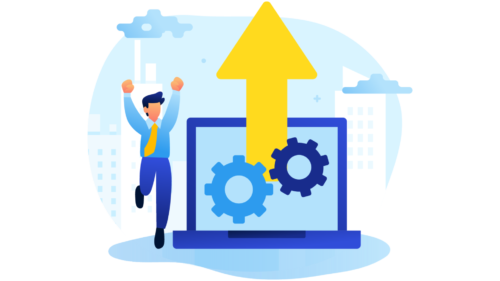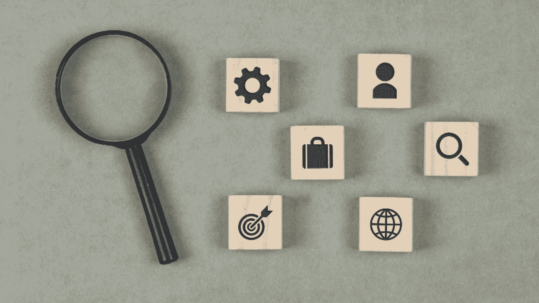
Why Your Recruitment Software Needs to Integrate with Other HR Tools: Benefits and Best Practices
In the fast-paced world of human resources, integration between various HR tools isn’t just a luxury—it’s a necessity. As companies grow and their HR needs become more complex, seamless integration between recruitment software and other HR tools can make the difference between a smooth operation and a chaotic one. Let’s dive into why integrating your recruitment software with other HR tools is crucial and explore best practices to ensure a successful integration.
Understanding the Importance of Talent Pipelines
1. Streamlined Processes
One of the primary benefits of integrating recruitment software with other HR tools is the streamlining of processes. When recruitment software is connected with tools like applicant tracking systems (ATS), HRIS (Human Resource Information Systems), and onboarding platforms, it eliminates the need for redundant data entry and reduces the risk of errors. For instance, when a candidate is hired, their information can automatically populate across all relevant HR systems, from payroll to benefits administration, saving valuable time and effort.
2. Enhanced Data Accuracy
Integration enhances data accuracy by ensuring that information is consistent across different platforms. When data is manually entered into multiple systems, discrepancies are likely to occur. Automated data synchronization between integrated tools helps maintain consistency and accuracy, leading to better decision-making and fewer administrative headaches.
3. Improved Candidate Experience
An integrated system contributes to a smoother candidate experience. For example, candidates can receive real-time updates on their application status and complete all necessary documentation through a single portal. This reduces friction in the hiring process and creates a more positive experience for candidates, which can be crucial in a competitive job market.
4. Better Analytics and Reporting
When recruitment software is integrated with other HR tools, it enables comprehensive data analysis and reporting. By aggregating data from various sources, HR teams can gain deeper insights into their hiring processes, track key performance indicators, and make data-driven decisions. For example, you can analyze the effectiveness of different recruitment channels or measure the time-to-fill metrics more accurately when all data is centralized.
5. Increased Efficiency and Productivity
Integration reduces the manual workload on HR teams by automating routine tasks. For example, when recruitment software integrates with an HRIS, it can automatically update employee records, manage benefits enrollment, and handle other administrative tasks. This frees HR professionals to focus on more strategic initiatives, such as talent development and organizational growth.

Best Practices for Seamless Integration
1. Define Clear Objectives
Before embarking on the integration process, it’s essential to define clear objectives. What specific problems are you trying to solve with integration? Whether it’s improving data accuracy, enhancing the candidate experience, or increasing efficiency, having well-defined goals will guide the integration process and ensure that all stakeholders are aligned.
2. Choose Compatible Systems
For a successful integration, choose systems that are compatible with each other. Most modern HR software solutions offer APIs (Application Programming Interfaces) or pre-built connectors to facilitate integration with other tools. Ensure that the systems you select are capable of communicating effectively with one another to avoid compatibility issues.
3. Pick an ATS with Robust Integration Capabilities
When selecting recruitment software, prioritize solutions that offer robust integration capabilities with other HR tools. Opt for platforms that provide a wide range of pre-built connectors for popular systems like payroll, HRIS, and onboarding platforms. This ensures seamless data transfer and synchronization across different tools, reducing manual data entry and minimizing integration complexities. Look for software with user-friendly integration management interfaces and strong customer support to streamline setup and troubleshooting. By choosing a recruitment solution with extensive integration options, you can build a cohesive HR ecosystem that enhances efficiency, accuracy, and the overall candidate experience.
4. Test Thoroughly
Before rolling out the integration across your organization, conduct thorough testing to identify and address any issues. Testing should include data synchronization, user interfaces, and workflow automation. Involve key stakeholders in the testing process to ensure that the integrated systems meet their needs and expectations.
5. Provide Training and Support
Proper training and support are crucial for successful integration. Ensure that HR teams are well-trained on the new integrated systems and understand how to use them effectively. Provide ongoing support to address any issues that may arise and keep the team informed about updates or changes to the integrated systems.
6. Monitor and Optimize
After the integration is complete, continuously monitor the performance of the integrated systems. Track key metrics, gather feedback from users, and identify areas for improvement. Regularly review and optimize the integration to ensure that it continues to meet your objectives and adapts to any changes in your HR processes.
Vultus: A Seamless Integration Solution
At Vultus, we understand the importance of seamless integration for effective HR management. Our recruitment software offers multiple integrations with leading HR tools, ensuring that your recruitment processes are synchronized with other essential HR functions. Whether you’re looking to integrate with ATS, HRIS, or onboarding platforms, Vultus provides the flexibility and functionality to meet your needs.
Discover how Vultus can enhance your recruitment process with our extensive integration options by visiting our integrations page.
Wrapping Up
Integrating recruitment software with other HR tools is not just about keeping up with technological advancements; it’s about optimizing HR operations and improving the overall experience for both candidates and HR professionals. By streamlining processes, enhancing data accuracy, and leveraging powerful analytics, organizations can achieve greater efficiency and drive better results.
By following best practices and choosing the right tools, you can ensure a smooth and successful integration process. And with solutions like Vultus offering seamless integration options, you can stay ahead in the ever-evolving HR landscape.
To receive and stay updated about related content:





